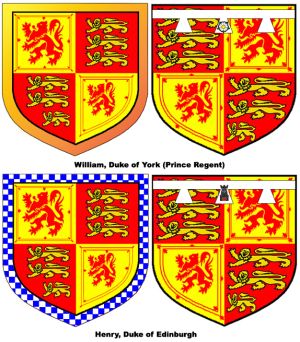Talk:Henry VII of England and Scotland
From IBWiki
Jump to navigationJump to search
I suppose this article is up for de-proposalizing even though there really isn't much here. Almost a stub, really. Would anyone care to expand it some? Zahir 21:01, 4 May 2006 (PDT)
Heraldry
Frankly I don't buy the argument of why the cadency was abandoned. England and Scotland have 2 of the most well established system of cadency in europe and to abandoned it would have been met with strong opposition from the heraldic authorities who are the ones with the final say in the matter. --Marc Pasquin 18:16, 31 October 2008 (UTC)
- Actually, the rules of cadence in English heraldry (for the royal family at least) were solidified *here* circa 1750-60, during the reign of Henry VII's grandfather, King James *there*. We've already established that he was something of a iconoclast, btw. However, the use of a label with three points had become traditional by then for the offspring of monarchs, with five points for their grandchildren. Some kind of personal badge was included in the middle point (or could be included at each point).
- Scots cadency, on the other hand, was in theory far more complex and rigid. On the basis of such, here would be a look at the arms King Henry VII's two eldest sons. William, Duke of York would include the white rose of York in his label. Henry, Duke of Edinburgh would include a black tower, referencing the Edinburgh COA. That would be the proposal, anyway. The bordures are those mandated by Scots cadency for the eldest two sons who are not heirs.
- However, that is not to say that other possibilities might have been left open. In practice, it is the sovereign who is granting awards of arms his or her family, and during the reign of Henry VII the rules for such (if history is analogous to our own) were fresh, albeit based on older traditions. For example, perhaps the cadencies were combined? Or an entirely different system worked out? What does anyone else think? Zahir 21:02, 31 October 2008 (UTC)
